NavSource Photo Archives:
Books We Like
Ship Types
|
Wars, Conflicts and Operations
|
Biographies
|
Aircraft Carriers
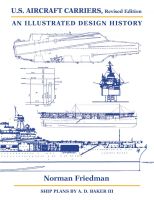 |
This account of U.S. carrier development, by Norman Friedman, is based on the internal files of the U.S. Navy and presents a complete evolutionary design history at a level of detail and accuracy never before approached. The author, a recognized authority on U.S. warships, uncovers the issues behind the emergence of today's carrier, explaining the reasons for the periodic but always aborted attempts to trim back its dimensions. As a result, U.S. Aircraft Carriers: An Illustrated Design History is relevant to both current and future plans for new carrier construction. ISBN 9780870217395 / 0870217399. The book can be purchased on the Internet from the U.S. Naval Institute. | |
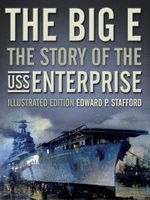 |
A lasting tribute to the USS Enterprise, this heavily illustrated, new edition tells the classic tale of the carrier that contributed more than any other warship to the naval victory in the Pacific. The original book, written by Commander Edward P. Stafford, USN (Ret.) and published in 1962, has remained one of the most celebrated World War II stories for more than four decades. The Big E participated in nearly every major engagement of the war against Japan and was awarded a total of twenty battle stars. The Halsey-Doolittle Raid; the Battles of Midway, Santa Cruz, Guadalcanal, the Philippine Sea, and Leyte Gulf; and the invasions of Iwo Jima and Okinawa are all faithfully recorded from the viewpoint of the men who served her so well. ISBN 978-1-59114-802-9. The book can be purchased on the Internet from the U.S. Naval Institute. | |
Destroyers
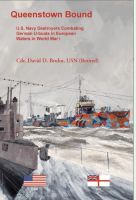 |
Queenstown Bound: U.S. Navy Destroyers Combating German U-boats in European Waters in World War I, by CDR David D. Bruhn, USN (Retired). Beginning in spring 1917, the U.S. Navy sent ever more divisions of destroyers to Europe, first to Queenstown, Ireland, and later to Gibraltar and French ports as well, to combat German U-boats. The submarines were taking a huge toll on Atlantic shipping over the course of World War I, resulting in the loss of nearly half of Britain's merchant fleet. By the time America entered the war, an expanded U-boat fleet had come dangerously close to choking off Britain's critical supply of food, which threatened the sustainment of the island nation and could have led to the collapse of the British war effort. Though lacking sonar, radar, and embarked helicopters common to warships today, the four-stack, coal-burning destroyers bravely carried out anti-submarine patrols and convoy escort duties. Their presence in dangerous waters where unseen submarines searched for victims, helped hold the enemy down and, when possible, enabled depth-charge and gunnery attacks against the enemy. The destroyers' greatest contributions were in helping to get two million U.S. soldiers safely to France, which changed the course of the war, and of world history. One hundred seventy-seven photographs, maps, and diagrams; appendices; a bibliography; and an index to full names, places, and subjects add value to this work. 2023, 6x9, paper, index, 308 pp The book can be purchased on the Internet from Heritage Books. | |
Auxiliary Vessels
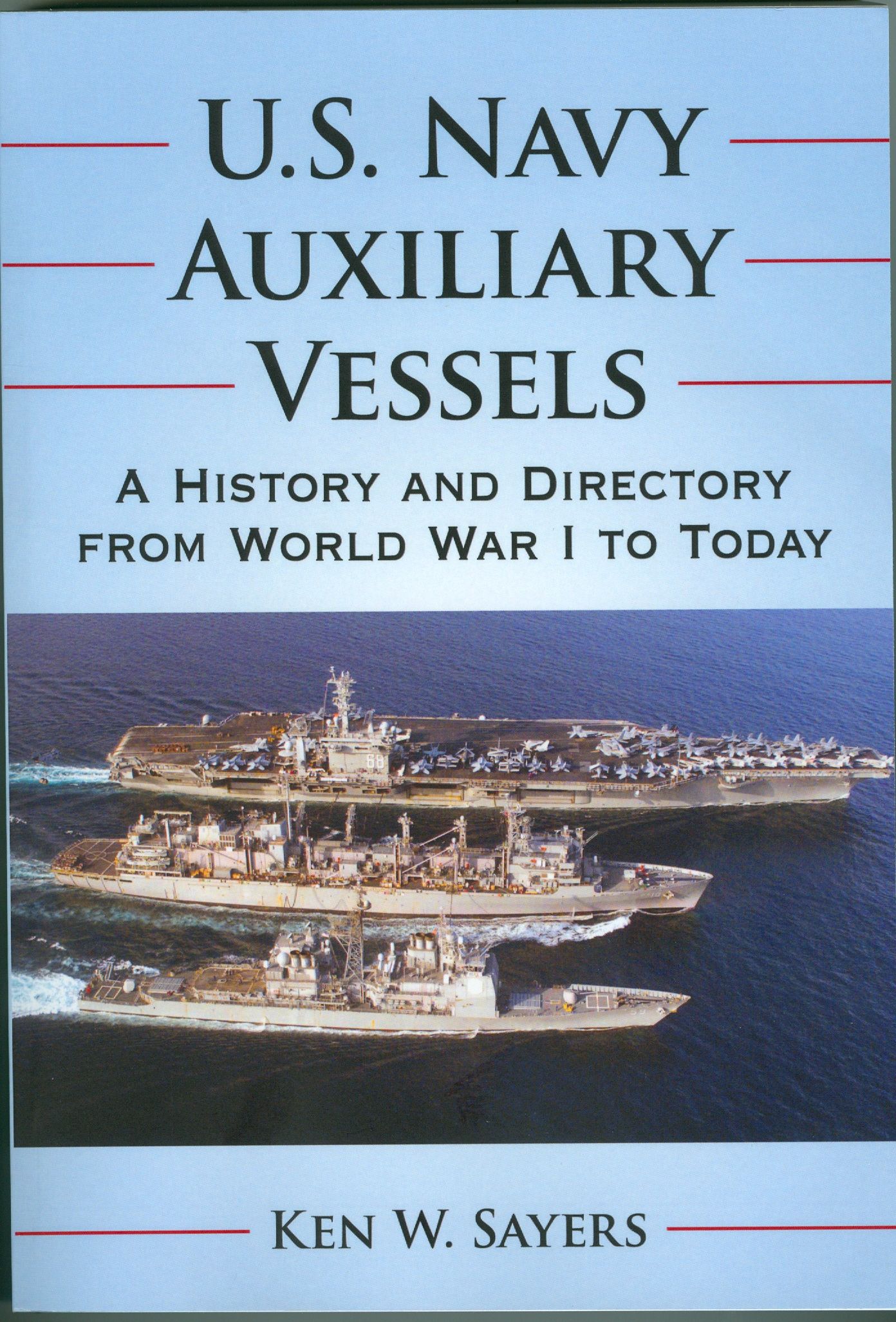 |
U.S. Navy Auxiliary Vessels: This work by author Ken W. Sayers describes over 130 U.S. Navy auxiliary ship types and illuminates the vital role they play in supporting the
fleet's warships with fuel, food, ammunition, spare parts and equipment. The book also discusses a variety of auxiliary ships that provide specialized support and services -
such as salvage, towing, surveying, special missioning, logistical prepositioning and high-speed transport to the Navy and the other branches of the armed forces. It
also documents many of the law enforcement, humanitarian and disaster relief operations performed by the Navy's auxiliary ships.
ISBN: 978-1-4766-4, McFarland Publishers, Jefferson, North Carolina, 2019, 6x9, paper, index, 353 pp. The book can be previewed and purchased on the internet from Amazon Books | |
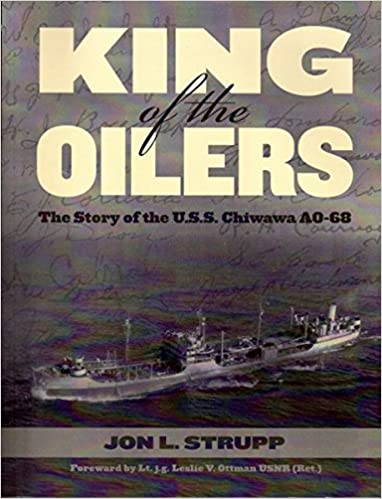 |
With entry into World War II, the United States of America faced a daunting task of delivering men and material on two distant fronts on opposite ends of the world. Due to this, a logistical system was developed like never seen before. This book tells the story of the fleet oiler, USS Chiwawa AO-68. How both men and machine, not primarily designed for war, were called from civilian life to defend their country and become part of the backbone of the navy helping to tip the balance in the Allies favor. Loaded with cargo consisting of kerosene, gasoline, diesel oil, Navy Special Fuel Oil, top side cargo, and passengers, the Chiwawa participated in nine trans-Atlantic convoys, delivering the goods to the European theater. Facing bad weather and the imminent threat of U-boats, the Chiwawa performed the delicate job of refueling the escort ships protecting the convoy while underway. When the war in Europe was won, the Chiwawa was transferred to the Pacific theater to confront ever present mines and two typhoons. This often overlooked aspect of World War II is examined using U.S. Navy records, crew interviews, diaries, and letters written during the war, telling the Chiwawa’s story through first-hand accounts of life at sea and land while visiting ports throughout Europe, Mediterranean, Caribbean and Pacific. This story is unique because the Chiwawa avoided scrapping after the war to return to civilian use, and serves to the present day on the Great Lakes as the ore carrier M/V Lee A. Tregurtha. Publication date, July 25, 2007, ISBN-10 1592981917, ISBN-13 978-1592981915. The book can be purchased directly from the author at email adddress Jon Strupp The book can also be Previewed and purchased on the Internet from Amazon Books | |
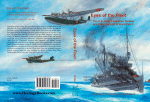 |
Eyes of the Fleet: The U.S. Navy's Seaplane Tenders and Patrol Aircraft in World War II - CDR. David D. Bruhn, USN (Retired). Cloaked by jungle foliage, the unheralded seaplane tenders operated ahead of the Fleet, like the Navy’s famed PT boats. As Halsey’s South Pacific, MacArthur’s Southwest Pacific, and Spruance’s Central Pacific forces advanced toward Japan, these ships served as afloat-bases for patrol planes referred to as the “eyes of the fleet.” The large fabric-clad PBY “Catalinas” and later PBM “Mariners” combed the seaways for Japanese forces and carried out bombing, depth charge, and torpedo attacks on enemy ships and submarines. Nighttime anti-shipping operations—“Black Cat” or “Nightmare” missions—were dangerous and daytime combat operations even more so, when encounters with more maneuverable and heavily-armed fighters necessitated hiding in clouds to survive. The Japanese were keen to destroy the scouts and their floating bases, and seaplane tenders often lived a furtive existence, particularly early in the war. Pilots, plane crews and shipboard personnel received scores of awards for valor, including the Medal of Honor, Navy Cross, Distinguished Flying Cross, and Silver and Bronze Star Medals. 2016, 6x9, paper, index, 546 pp. 101-B5707 ISBN: 0788457071 The book can be Previewed and purchased on the Internet from Amazon Books | |
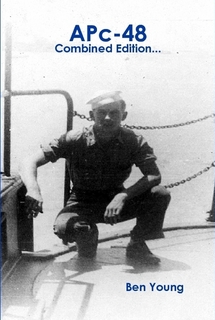 |
"APC-48" is the story the US Navy Coastal Transports. Very little has been written about these small wooden ships and their brave crews and their contribution
to the Pacific war effort. APc's were invaluable in the efforts to dislodge the Japanese from the many small islands in the South Pacific. APc's transported troops and their equipment,
delivered need supplies to small isolated outposts and were vital in the amphibious operations to recapture many of the islands. APc's, because of their shallow draft,
led many larger landing craft into beachheads. Lightly armed with only four single 20mm guns and occasionally with an additional two .50cal machine guns they faced the enemy
knowing that a single mortar or artillery shell could sink them. "APc-48" is really two books in one. Book One describes the contribution of one middle America family
to the war effort at home and overseas. It also provides an overall description of World War II both at home and abroad and how family members fit into the picture.
Book Two follows the operations and travels of APc-48 and family member 19 year old draftee William Vernon Johnson MM2/c USNR who served in the ship during World War II.
ISBN 978-1-387-32291-6. The book can be purchased on the Internet from LULU Press | |
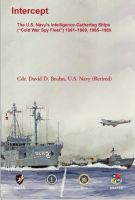 |
Intercept: The U.S. Navy's Intelligence-Gathering Ships ("Cold War Spy Fleet") 1961–1969, 1985–1989, by CDR David D. Bruhn, U.S. Navy (Retired). During the period 1961&ndas;1969 inclusive, a dozen intelligence-gathering ships conducted signals intelligence collection under the control of the NSA. These ships, with the exception of the fleet tug Atakapa, were World War II freighters taken out of "mothballs" and converted for their new roles. Operating in international waters, just off the coastlines of adversary nations, they monitored targets not otherwise accessible to collection resources. These efforts included signals coverage of Latin America and Africa; interception from the Atlantic and Indian Oceans of telemetry data associated with Soviet spacecraft launches; and intelligence collection off Vietnam, Cambodia, the Soviet Union, China, and North Korea. USNS Muller was harassed by Cuban patrol boats, and USS Banner by Soviet and Chinese vessels. In 1967, USS Liberty was attacked by Israeli air and naval forces, resulting in the death of thirty-four members of her crew, and another 172 wounded. The following year, USS Pueblo was captured by North Korean military forces, an event linked to the John Walker espionage ring. One crewmember was killed, others endured torture during their eleven months as POWs. The latter two incidents, and competing Vietnam War requirements, resulted in the retirement in 1969 of the remaining ships. Two decades later, in 1985, a need for a ship off Nicaragua—to collect intelligence on arms traffic in the Gulf of Fonseca—brought the USS Sphinx, a former WWII landing craft repair ship, out of the reserve fleet. One hundred thirty-eight photographs, maps, and diagrams; appendices; and an index to full names, places, and subjects add value to this work. The book can be purchased on the Internet from Heritage Books. | |
Amphibious Vessels
 |
Jim Tusing LSM 372 Editor Emeritus Alligator Alley has recently had a new book published "We Land at the Break of Day", a
collection of LSM/LSMR that were previously published in the "Alligator Alley". The book has 25 Sea Stories and 30 pictures chosen by Jim that hopefully tells a little about what it was like in World War II to in these great little ships. The book can be Previewed and purchased on the Internet from the Blurb web site | |
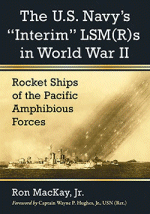 |
Ron MacKay, Jr. the Secretary-Storekeeper/Historian of the USS LSM-LSMR Association has recently completed a new book released in April 2016 "The US Navy's 'Interim' LSM(R)s in World War II: Rocket Ships of the Pacific Amphibious Forces" The “Interim” LSM(R) or Landing Ship, Medium (Rocket) was a revolutionary development in rocket warfare in World War II and the U.S. Navy’s first true rocket ship. An entirely new class of commissioned warship and the forerunners of today’s missile-firing naval combatants, these ships began as improvised conversions of conventional amphibious landing craft in South Carolina’s Charleston Navy Yard during late 1944. They were rushed to the Pacific Theater to support the U.S. Army and Marines with heavy rocket bombardments that devastated Japanese forces on Okinawa in 1945. Their primary mission was to deliver maximum firepower to enemy targets ashore. Yet LSM(R)s also repulsed explosive Japanese speed boats, rescued crippled warships, recovered hundreds of survivors at sea and were deployed as antisubmarine hunter-killers. Casualties were staggering: enemy gunfire destroyed one, while kamikaze attacks sank three, crippled a fourth and grazed two more. This book provides a comprehensive operational history of the Navy’s 12 original “Interim” LSM(R)s. McFarland web site | |
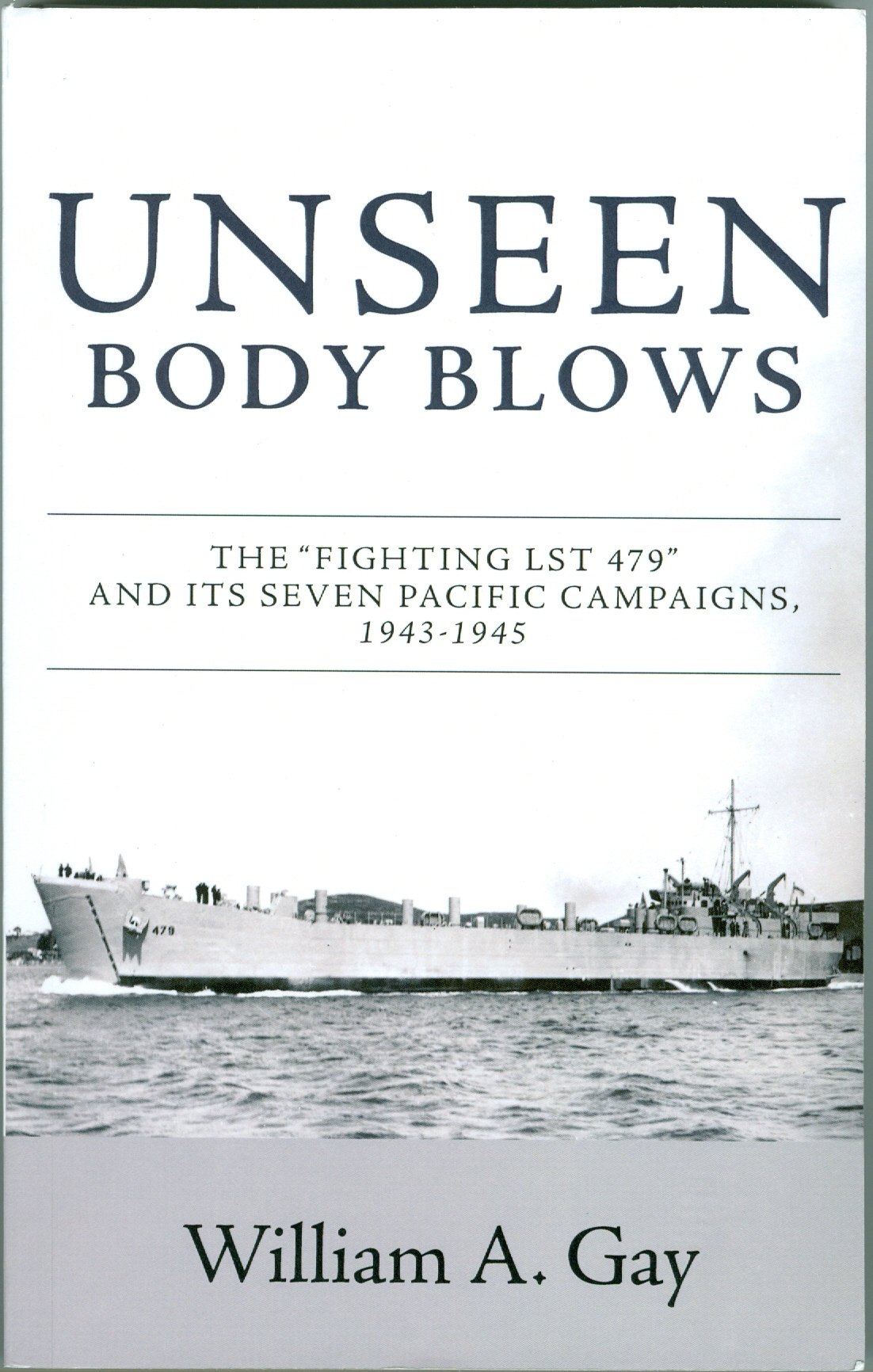 |
"Between 1942 and 1945, 1051 amphibious tank-landing ships were rapidly produced. These were anonymous vessels, slow and unwieldy, and in the word of one
crewmember, they looked like bathtubs. At first, LSTs had a reputation of being expendable and of relatively low value, and so were bestowed another. less noble,
nickname, "Large Slow Targets." Put into service to get troops and equipment ashore, the story of LST 479 is in some respects the story of all of these ships.
Typical of all early LSTs, its crew on commissioning day. April 19, 1943, consisted of raw amateurs. But over the next 1,046 days, through collisions, accidental groundings,
navigational errors, and lots of mechanical breakdowns, the 479 crew became sailors. Displaying heroism and ingenuity, they rescued the crew of a crippled landing
craft during an Alaskan storm, battled fires aboard a burning LST hit by kamikazes, and fought off air attacks as they landed troops at Kiska, Makin, Kwajalein, Guam, Hollandia
the Philippines and Okinawa. This LST crew became the embodiment of the Navy 2018 recruiting slogan: "Forged by the Sea." In gripping, meticulously researched, "your are there"
fashion, author William A. Gay, recounts the fascinating history of the 479's seven Pacific campaigns; from the day-to-day life of men aboard her, to their terrifying
encounters in battle as they delivered "unseen body blows" to the enemy that helped win the war in the Pacific."
ISBN 978-1-5255-3833-9 (Hardcover), 978-1-5255-3834-6 (Paperback), 978-11-5255-3835-3 (ebook), FriesenPress. The book is available on both the Amazon and Barnes and Noble sites. | |
Mine Warfare
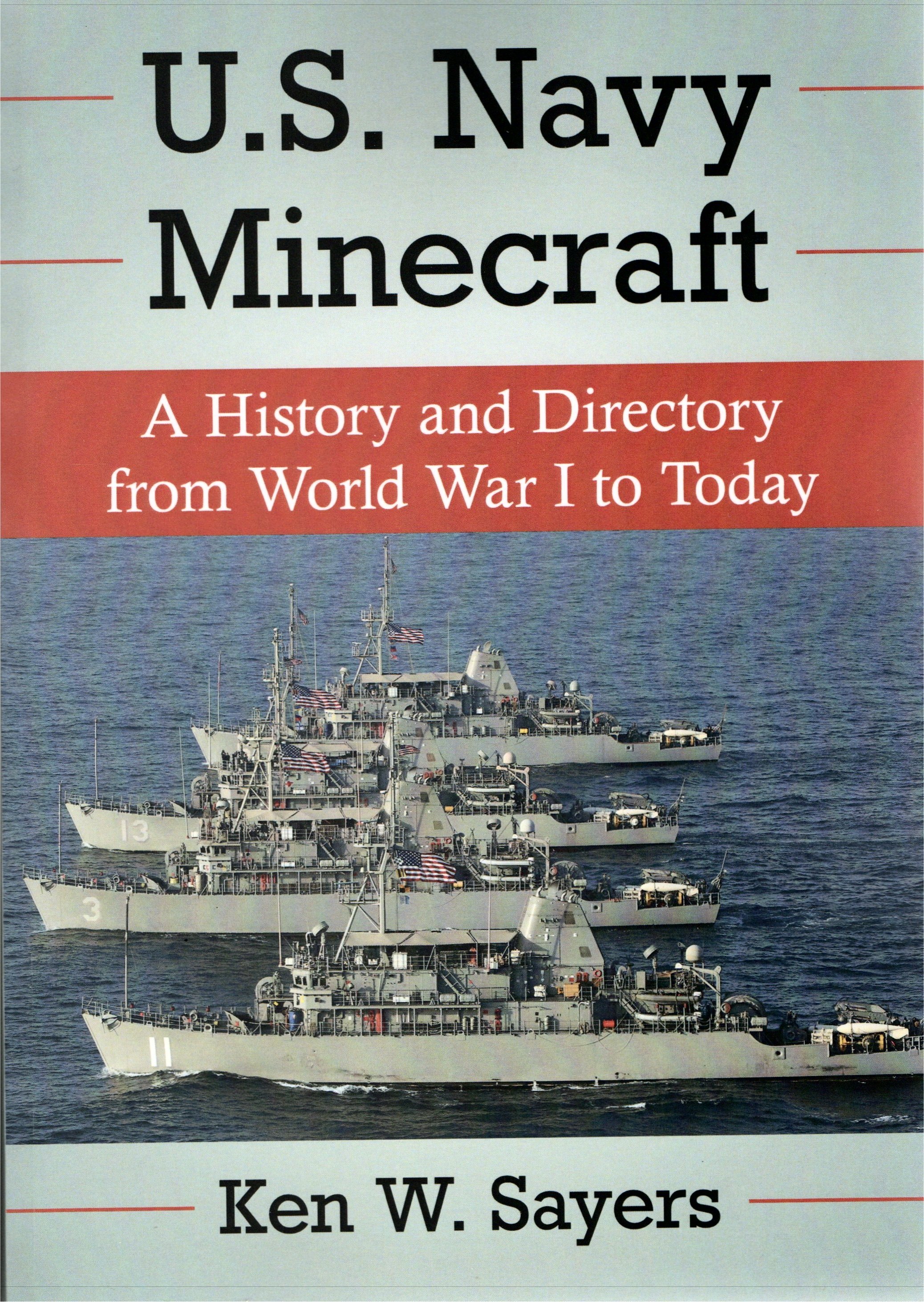 |
U.S. Navy Minecraft: A History and Directory from World War I to Today. This work by author Ken W. Sayers shines the spotlight on the U.S. Navy mine warfare community.
A little known area of Naval warfare, yet it is a large community numbering some 2,265 hulls in 26 different Classifications. These vessels serve unassumingly with scant notice from
the public. However, if a mine sinks or damages a merchant ship of a warship is lost, mine warfare does get the attention of reporters. broadcasters, politicians and admirals. In the
meantime, these small ships work tirelessly perfecting their craft by practicing their mission laying mines to prevent enemy vessels from penetrating our defenses and
removing enemy mines to allow the rest of our Navy's ships to move across the sea without fear of striking an enemy mine.
ISBN: 978-1-4766-8202-0, McFarland Publishers, Jefferson, North Carolina, 2019, 7x10, paper, index, 491 pp. The book can be previewed and purchased on the internet from Amazon Books | |
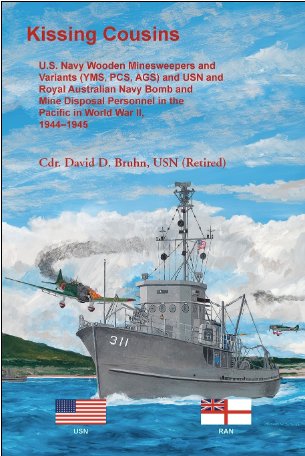 |
Kissing Cousins. U.S. Navy wooden minesweepers and variants (YMS, PCS, AGS) and USN Royal Australian Navy Bomb and Mine Disposal Personnel in the Pacific in World War II 1944-1945. CDR. David D. Bruhn USN (Retired)
Late in World War II, the U.S. Navy mandated that fifty-nine wooden-hulled ships laid down in builders’ yards as YMS minesweepers, be completed as patrol craft sweepers (PCS). Sixteen of these “kissing cousins” of the YMSs were sent to the Pacific. They engaged in combat operations with amphibious forces at Saipan and Tinian, followed by the southern Palau Islands, Leyte and Lingayen Gulf in the Philippines, Iwo Jima, and Okinawa. During invasions of Japanese-held islands, PCSs directed waves of assault craft to hostile beaches; then joined YMSs, once finished with minesweeping, in patrol duties. Four PCSs were converted to AGS survey ships for the invasion of Okinawa. There, while subject to Japanese shore fire and Kamikaze attacks, the gun crews of some YMSs, PCSs and AGSs shot down attacking aircraft. Separately throughout the war in the Pacific, kissing cousins of another ilk, U.S. Navy and Royal Australian Navy Bomb and Mine Disposal personnel plied their dangerous craft at sea, on beaches, and in inland jungle areas of enemy-held or recently captured island bastions. One hundred ninety-six photographs, maps, and diagrams; appendices; and an index to full names, places, and subjects add value to this work. ISBN: 978-0-7884-2698-8 Heritage Books Inc., Berwyn Heights, Maryland, 2022, 6x9, paper, index, 426 pp. This book can be previewed and purchased on the internet from Heritage Books | |
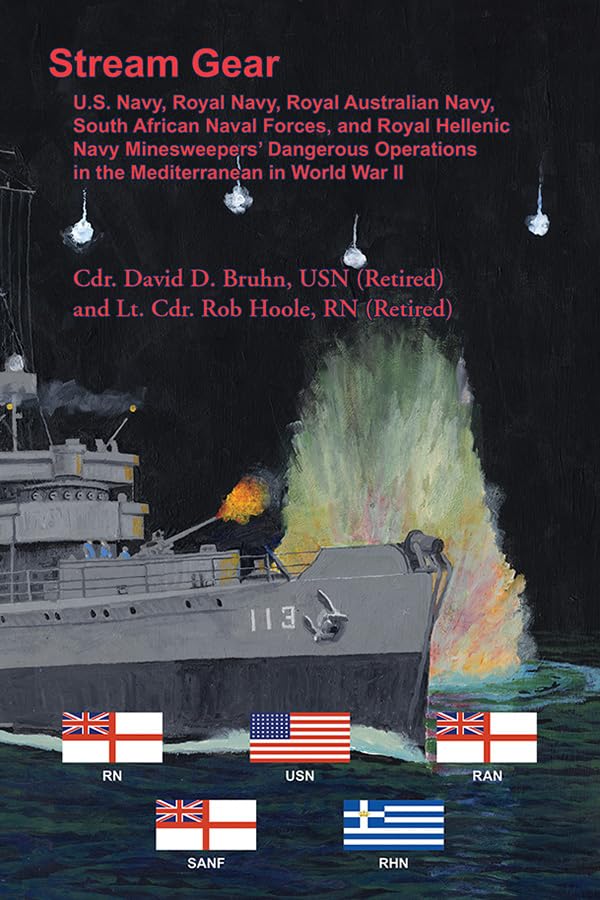 |
Stream Gear. U.S. Navy, Royal Navy, Royal Australian Navy, South African Naval Forces, and Royal Hellenic Navy Manesweepers' Dangerours Operations in the Mediterrean in World War II. CDR. David D. Bruhn USN (Retired)
The Mediterranean was the scene of intense naval combat in World War II, critical to Allied victory in Europe. In the early years of war at sea, the Royal Navy performed the bulk of the minesweeping necessary to safeguard naval and merchant shipping in this dangerous theatre, aided by ships of the Royal Australian Navy, South African Naval Forces, and Royal Hellenic Navy. America entered the war in November 1942, when U.S. Navy and Army air and land forces joined those of Britain and other Allies in the Invasion of North Africa. Following this success came a succession of hard-won amphibious landings in the western Mediterranean at Sicily, Salerno, and Anzio, Italy, and finally in August 1944, the Invasion of Southern France. Leading naval assault forces, U.S. Navy, Royal Navy, and other Allied minesweepers swept clear of mines the approaches to landing beaches, often while under attack by enemy naval/air forces and/or hostile shore batteries. Tragically, nearly three score (60) minesweepers were lost in the Med during the war, and with them, much greater numbers of their valiant, stoic, hard-fisted, sailors killed in action. This is their story. One hundred seventy three pages, photographs, maps, and diagrams; appendices; and an index to full names, places, and subjects. ISBN: 978-0-7884-2894-7. This book can be previewed and purchased on the internet from Heritage Books Inc., Berwyn Heights, Maryland, 2022, 6x9, paper. This book can be previewed and purchased on the internet from Heritage Books | |
Patrol Vessels
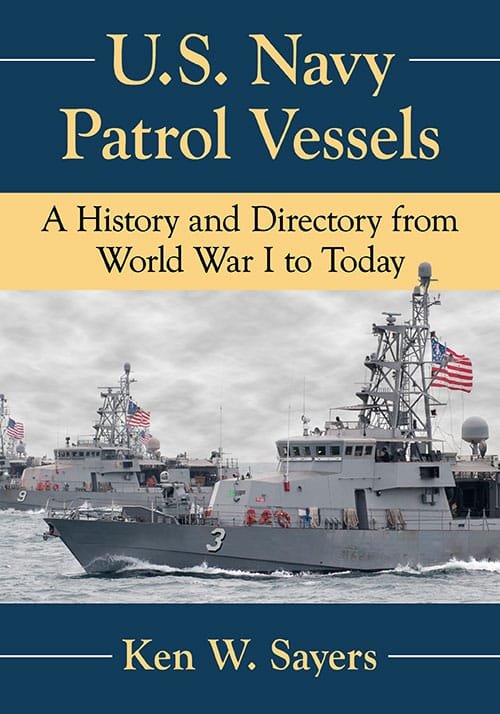 |
U.S. Navy Patrol Vessels: A History from World War I to Today. This work by author Ken W. Sayers covers 27 different patrol vessels types. Navy patrol
vessels have operated everywhere there is a body of water deep enough to float them. They have performed in a variety of roles, from antisubmarine warfare to convoy
escort and offensive operations against enemy forces afloat and ashore. Patrol vessels battled German units in the Mediterranean, fought insurgents along the rivers
and canals in China and Vietnam and protected U.S. ships and facilities in the Persian Gulf.
ISBN: 978-1-4766-7650-0, McFarland Publishers, Jefferson, North Carolina, 2019, 7x10, paper, index, 549 pp. The book can be previewed and purchased on the internet from Amazon Books | |
Uncommon Types
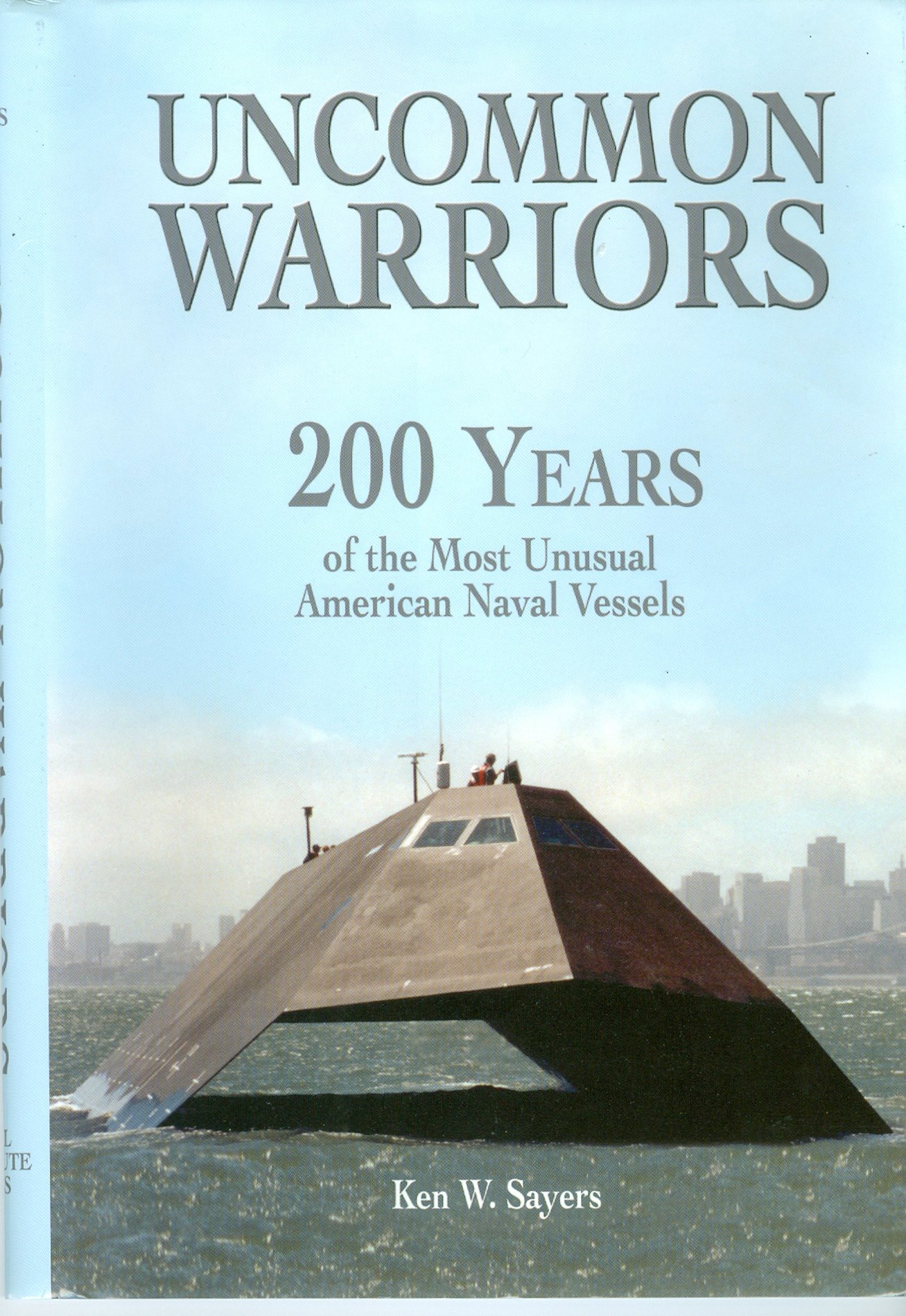 |
Beyond the usual carriers, submarines cruisers, and destroyers, the U.S. Navy has deployed a vast flotilla of vessels to service in specialized roles and
unusual missions. These uncommon warriors, called auxiliary (AG) and miscellaneous (IX) vessels, are the subject of this study. It provides individual histories,
specifications, and illustrations of more then forty vessels and concise directory listings for another four hundred vessels. Some began their careers as powerful warships
with impressive pedigree and achievements. Others started out as prosaic commercial vessels, but after joining the fleet helped the Navy to win in war.
From battleships to tugs, the "navy within the Navy" includes such historic men-of-war as the USS Constitution "Old Ironsides" - the oldest commissioned warship in the world still afloat, as well as the Hartford, a Civil War celerity Farragut's flagship at the battle of Mobile Bay, and Norman Rockwell's floating studio in 1918. Other unique ships include the Glomar Explorer, a super-secret CIA ship that raised part of a Soviet ballistic missile submarine from the bottom of the Pacific Ocean, the Deal, a cargo ship that later became a pirate radio station, and much much more. ISBN 978-1-59114-760-2. The book can be Previewed and purchased on the Internet from Amazon Books | |
World War I
 |
Queenstown Bound: U.S. Navy Destroyers Combating German U-boats in European Waters in World War I, by CDR David D. Bruhn, USN (Retired). Beginning in spring 1917, the U.S. Navy sent ever more divisions of destroyers to Europe, first to Queenstown, Ireland, and later to Gibraltar and French ports as well, to combat German U-boats. The submarines were taking a huge toll on Atlantic shipping over the course of World War I, resulting in the loss of nearly half of Britain's merchant fleet. By the time America entered the war, an expanded U-boat fleet had come dangerously close to choking off Britain's critical supply of food, which threatened the sustainment of the island nation and could have led to the collapse of the British war effort. Though lacking sonar, radar, and embarked helicopters common to warships today, the four-stack, coal-burning destroyers bravely carried out anti-submarine patrols and convoy escort duties. Their presence in dangerous waters where unseen submarines searched for victims, helped hold the enemy down and, when possible, enabled depth-charge and gunnery attacks against the enemy. The destroyers' greatest contributions were in helping to get two million U.S. soldiers safely to France, which changed the course of the war, and of world history. One hundred seventy-seven photographs, maps, and diagrams; appendices; a bibliography; and an index to full names, places, and subjects add value to this work. 2023, 6x9, paper, index, 308 pp The book can be purchased on the Internet from Heritage Books. | |
World War II
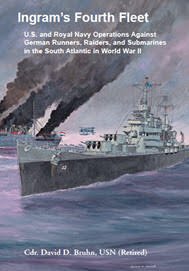 |
Ingram’s Fourth Fleet: U.S. and Royal Navy Operations Against German Runners, Raiders, and Submarines in the South Atlantic in World War II - CDR. David D. Bruhn USN (Retired). The story of the South Atlantic campaign in World War II, and that of the U.S. 4th Fleet and Royal Navy forces in the theater, was primarily one of ships and land-based planes hunting enemy submarines, commerce raiders, and blockade runners, while also safeguarding convoys. Admiral Ingram was the commander of a small seagoing force that grew into a fleet, charged at first with reconnaissance, later with the protection of shipping, and finally with the waging of relentless warfare against the enemy. The accomplishment of this required great teamwork; between the U.S. and Royal navies, various branches of the American military services, and Americans and Brazilians. Overshadowed by many larger actions and amphibious landings in the European and Pacific theaters, and therefore little known to the public, the South Atlantic campaign helped win the war. Companion book to Eyes of the Fleet: The U.S. Navy’s Seaplane Tenders and Patrol Aircraft in World War II. 2017, 6x9, paper, index, 414 pp. 101-B5757 ISBN: 0788457578 The book can be Previewed and purchased on the Internet from Amazon Books | |
 |
A lasting tribute to the USS Enterprise, this heavily illustrated, new edition tells the classic tale of the carrier that contributed more than any other warship to the naval victory in the Pacific. The original book, published in 1962, has remained one of the most celebrated World War II stories for more than four decades. The Big E participated in nearly every major engagement of the war against Japan and was awarded a total of twenty battle stars. The Halsey-Doolittle Raid; the Battles of Midway, Santa Cruz, Guadalcanal, the Philippine Sea, and Leyte Gulf; and the invasions of Iwo Jima and Okinawa are all faithfully recorded from the viewpoint of the men who served her so well. ISBN 978-1-59114-802-9. The book can be purchased on the Internet from the U.S. Naval Institute. | |
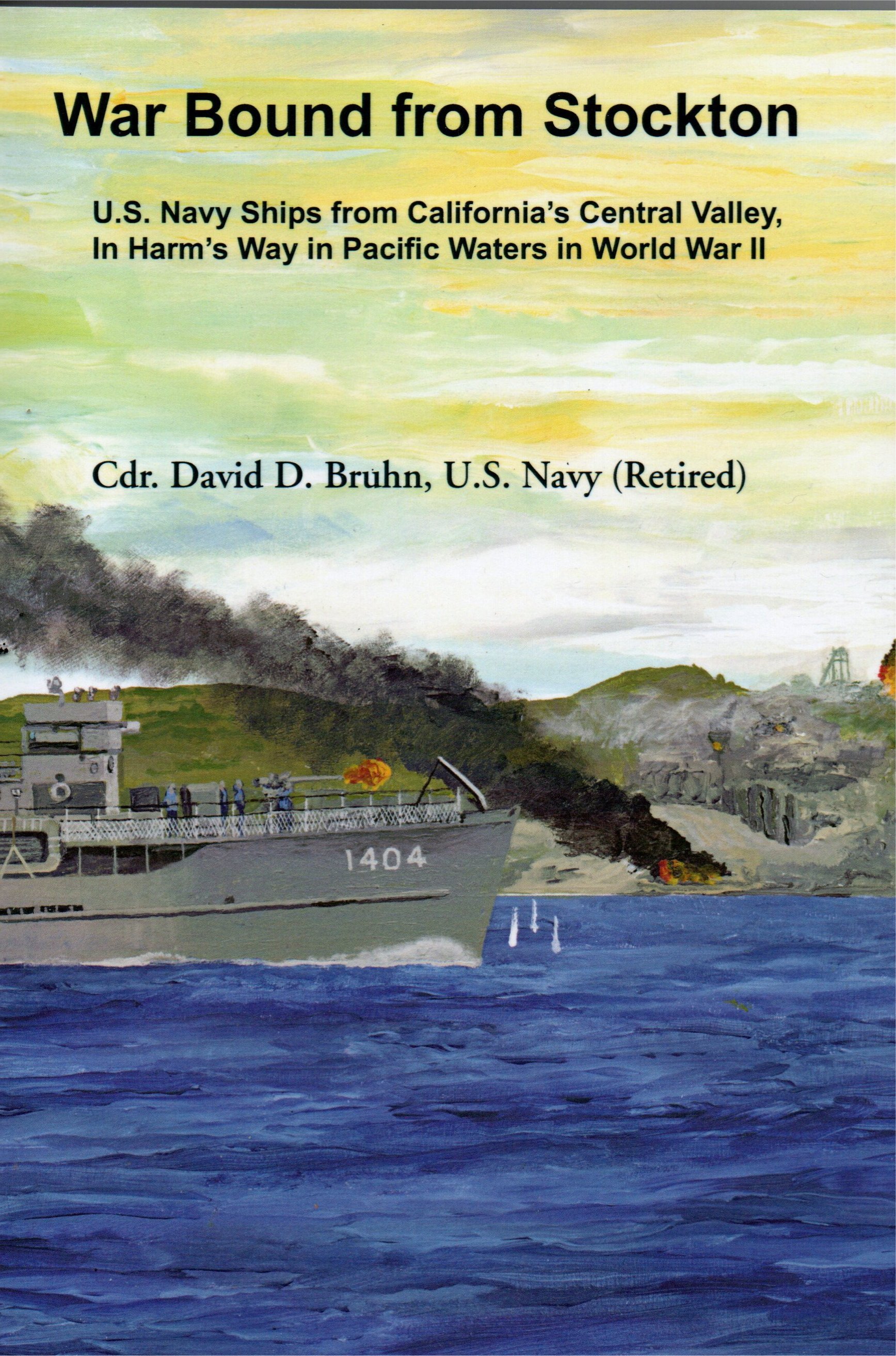 |
War Bound from Stockton - U.S. Navy Ships from California Central Valley, In Harm's Way in Pacific Waters in World War II - CDR. David D. Bruhn USN (Retired). These are stories of the wooden ships built at Stockton, California, a Central Valley city on the San Joaquin River River, during Wold War II. Upon the United States entry into World War II it became apparent to President Franklin D. Roosevelt, a former Assistant Secretary of the Navy and a yachting enthusiast that existing yards turning out steel ships as fast as possible could not meet the Navy's needs. Accordingly, he directed work to the under utilized wooden boat and yacht building yards across the county, resulting in thousands of ships and other vessels joining the Fleet. These are the stories of some of the various ships and craft built in Stockton yards. Stockton yards built many different types of vessels for the Navy, Coast Guard and Army. Among theNavy ships and craft were Rescue and Salvage Ships, Rescue Tugs, Net Layers, Patrol Craft, and various Yard Craft, Dry Docks and barges. Mostly crewed by Naval Reserve officers and men they earned collectively thirty-eight battle stars and one a Presidential Unit Citation. With the conclusion of the war the Navy released the reservists back into the civilian economy and disposed of almost all of the wooden vessels. ISBN: 978-0-7884-2912-5 The book can be Previewed and purchased on the Internet from Heritage Books | |
Cold War
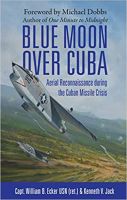 |
Most books on the Cuban Missile Crisis tell the story using the memoirs of those who advised President Kennedy as he struggled to avoid World War III. This book is the only known personal account of the lead photographic reconnaissance squadron's scouting dangerous low-level operations, flying the supersonic RF-8A Crusader, during the classified Operation Blue Moon. Captain William B. Ecker was the commanding officer of US Navy Light Photographic Squadron 62 (VFP-62, otherwise known as "Fightin' Photo") during the Cuban Missile Crisis, a team created for reconnaissance and aerial photography, and consulted on the movie Thirteen Days, which included dramatic scenes of his first mission over Cuba on 23 October 1962. Kenneth V. Jack also served in VFP-62 and is now webmaster of the squadron's website. Blue Moon over Cuba is an authoritative and complete account of the low-level reconnaissance that might be said to have helped JFK avert nuclear Armageddon. ISBN 1780960719 / 978-1780960715. The book can be purchased on the Internet from Osprey Publishing. | |
 |
Intercept: The U.S. Navy's Intelligence-Gathering Ships ("Cold War Spy Fleet") 1961–1969, 1985–1989, by CDR David D. Bruhn, U.S. Navy (Retired). During the period 1961&ndas;1969 inclusive, a dozen intelligence-gathering ships conducted signals intelligence collection under the control of the NSA. These ships, with the exception of the fleet tug Atakapa, were World War II freighters taken out of "mothballs" and converted for their new roles. Operating in international waters, just off the coastlines of adversary nations, they monitored targets not otherwise accessible to collection resources. These efforts included signals coverage of Latin America and Africa; interception from the Atlantic and Indian Oceans of telemetry data associated with Soviet spacecraft launches; and intelligence collection off Vietnam, Cambodia, the Soviet Union, China, and North Korea. USNS Muller was harassed by Cuban patrol boats, and USS Banner by Soviet and Chinese vessels. In 1967, USS Liberty was attacked by Israeli air and naval forces, resulting in the death of thirty-four members of her crew, and another 172 wounded. The following year, USS Pueblo was captured by North Korean military forces, an event linked to the John Walker espionage ring. One crewmember was killed, others endured torture during their eleven months as POWs. The latter two incidents, and competing Vietnam War requirements, resulted in the retirement in 1969 of the remaining ships. Two decades later, in 1985, a need for a ship off Nicaragua—to collect intelligence on arms traffic in the Gulf of Fonseca—brought the USS Sphinx, a former WWII landing craft repair ship, out of the reserve fleet. One hundred thirty-eight photographs, maps, and diagrams; appendices; and an index to full names, places, and subjects add value to this work. The book can be purchased on the Internet from Heritage Books. | |
Vietnam
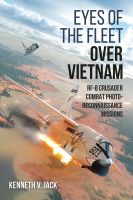 |
Veteran and historian Kenneth V. Jack pieces together the chronological history of photo recon in the Vietnam War between 1964 and 1972, describing all types of missions undertaken, including several Crusader vs. MiG dogfights and multiple RF-8 shootdowns with their associated, dramatic rescues. The narrative focuses on Navy Photo Squadron VFP-63, but also dedicates chapters to VFP-62 and Marine VMCJ-1. The historical narrative is brought to life through vivid first-hand details of missions over intensely defended targets in Laos and North Vietnam. While most books on the Vietnam air war focus on fighter and bombing action, this book provides fresh insight into the air war through its focus on photo reconnaissance and coverage of both versions of the Crusader. ISBN 9781636240749. The book can be purchased on the Internet from Casemate Publishers. | |
Biographies
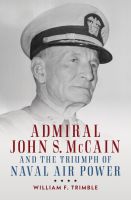 |
Admiral John S. McCain and the Triumph of Naval Air Power, by William F. Trimble, covers the life and professional career of ADM John S. McCain Sr. (1884–1945). Spanning most of the first half of the twentieth century, McCain's life and career highlight the integration of aviation into the Navy, emphasizing the evolution of the aircraft carrier from a tactical element of the fleet stressing sea control to a strategic force capable of long-range power projection. ISBN 1682473708 | 9781682473702. The book can be purchased on the Internet from the U.S. Naval Institute. | |
| Comments, Suggestions, E-mail Webmaster. |
This page is created and maintained by Gary P. Priolo
|